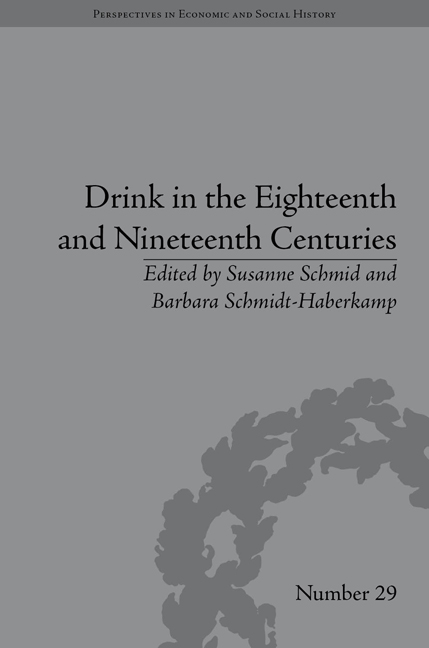Book contents
- Frontmatter
- CONTENTS
- Acknowledgements
- List of Contributors
- List of Figures and Tables
- Introduction
- Part I Ritual and Material Culture
- Part II Institutions and Social Class
- Part III Temperance and the Misery of Alcohol
- 7 Romantic Radicalism and the Temperance Movement
- 8 The Myth of ‘Misery Alcoholism’ in Early Industrial England: The Example of Manchester
- Part IV Intoxication and Therapy
- Part V Case Studies: Rum, Cocoa and Magical Potions
- Notes
- Index
8 - The Myth of ‘Misery Alcoholism’ in Early Industrial England: The Example of Manchester
from Part III - Temperance and the Misery of Alcohol
- Frontmatter
- CONTENTS
- Acknowledgements
- List of Contributors
- List of Figures and Tables
- Introduction
- Part I Ritual and Material Culture
- Part II Institutions and Social Class
- Part III Temperance and the Misery of Alcohol
- 7 Romantic Radicalism and the Temperance Movement
- 8 The Myth of ‘Misery Alcoholism’ in Early Industrial England: The Example of Manchester
- Part IV Intoxication and Therapy
- Part V Case Studies: Rum, Cocoa and Magical Potions
- Notes
- Index
Summary
Plate 3 of William Hogarth's famous series of etchings, A Rake's Progress (1735), the realistic-cynical mirror of his age, shows the protagonist Tom Rakewell squandering his money in the company of prostitutes in London's Rose Tavern. Two prostitutes can be seen, spitting gin at each other; two more women on the right devote themselves to drinking: one holds the carboy in her hand, probably to refill the glass quickly, while the other woman is greedily swallowing from a huge cup or bucket. The women's excessive drinking may be motivated by their occupation, prostitution, and the exploitation and dependence that come with it. Such images of ‘misery alcoholism’ have become part of our cultural memory since the beginning of the industrial era. In order to explain this concept, I shall begin with some basic considerations of the indicator value of alcohol consumption as well as its function and its prevailing assessment. Subsequently, two parameters will illustrate my theory of misery-alcoholism: occupational and gender-specific drinking habits. The concept of misery alcoholism presented here rests on the assumption that excessive alcohol consumption constitutes a reaction to stress: the wish to intoxicate oneself grows in proportion to difficult circumstances, to decreases in individual self-determination and to deteriorations of living and working conditions.
Hogarth's engraving reflects a change of paradigm in the assessment of drinking: during much of the pre-modern period, alcoholic intoxication had high social status.
- Type
- Chapter
- Information
- Drink in the Eighteenth and Nineteenth Centuries , pp. 91 - 102Publisher: Pickering & ChattoFirst published in: 2014



